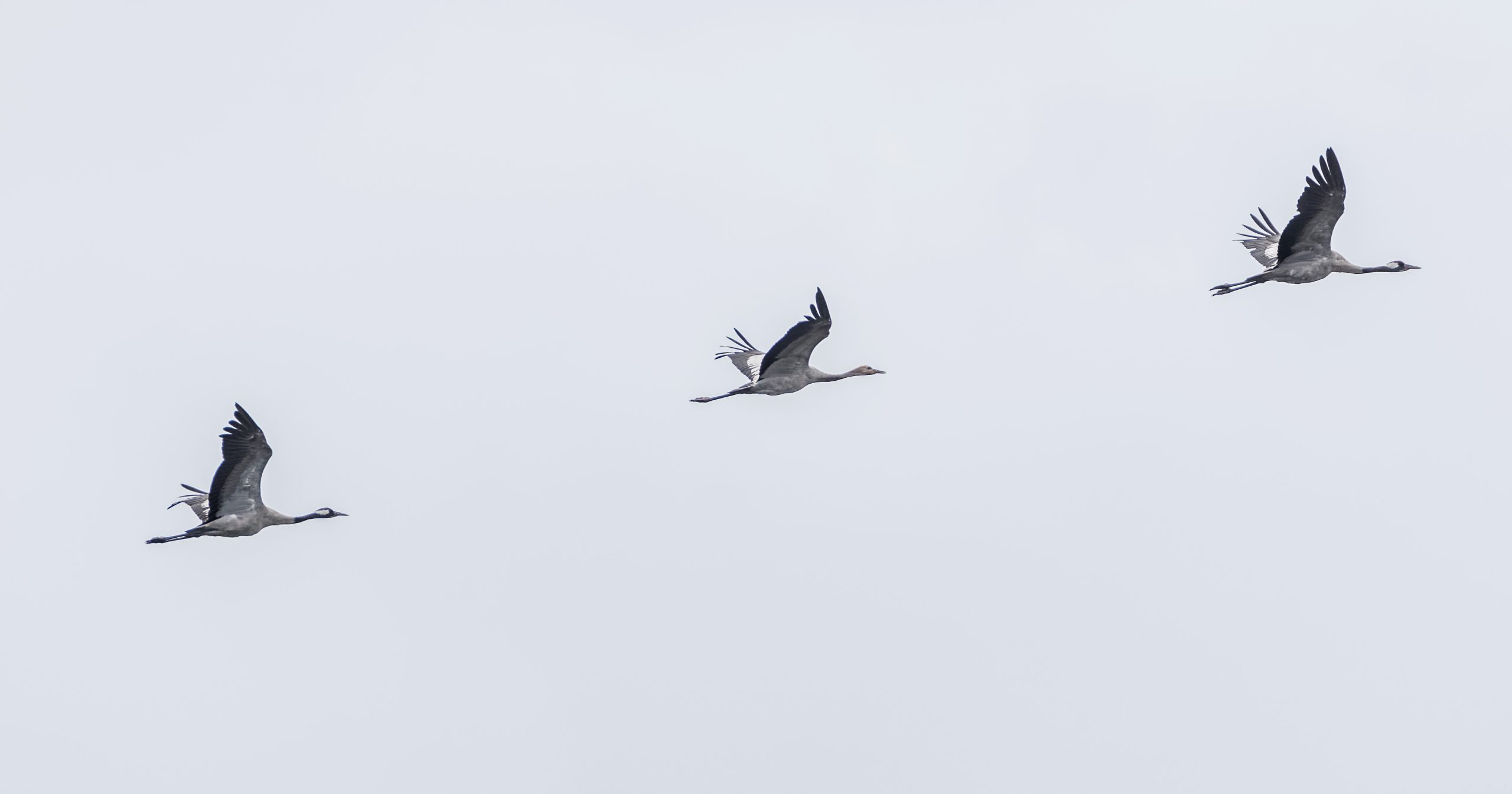Common Crane Chick Fledges on Bord na Móna's Rewetted Peatlands: 2nd Year After 300-Year Hiatus

A view of the Common Crane chick with his parents
Mandatory Credit ©INPHO/James Crombie
Bord na Móna announces confirmed fledging of a Common Crane chick on rewetted peatlands for the second consecutive year following 300-year breeding hiatus
Bord na Móna has today announced that a pair of Common Cranes have returned from their wintering grounds from abroad to one of Bord na Mona’s rewetted peatlands and successfully fledged a new chick in recent weeks. The Common Crane chick which has taken its first flight (also known as fledging) will soon leave Ireland along with its parents and most likely spend the winter in Southern Europe. This occurrence marks the second time a Common Crane chick (or chicks) has fledged and left Irish shores in the past two years. Prior to this, the species had no known cases of breeding in Ireland for over 300 years.
Additionally, there have been two separate sightings of Common Crane pairs in Offaly and Tipperary over the last few months. The sites where these Common Cranes have been spotted comprise Bord na Móna cutaway bogs, which were formerly used to extract peat for energy production but have since been rewetted in recent years under different initiatives including as part of the company’s Peatlands Climate Action Scheme (PCAS) also referred to as EDRRS.
This EU funded scheme involves the rehabilitation of Bord na Móna’s peatlands, and aims to rewet drained peatlands for improved climate, environmental, ecological and hydrological impacts. The benefits of bog rehabilitation include the return of carbon storage that occurs naturally in wet peatlands, as well as restored biodiversity with the revival of various plant and wildlife species, including potentially such species as the recently sighted Common Cranes.
Historically the Common Crane was a breeding resident in Ireland but has been extinct in this country since at least the end of the 16th century, if not longer. Sightings in Irish skies of this species have increased in recent years during periods of migration and overwintering. This is largely attributable to ongoing population increases across the known breeding range, supported in part by conservation efforts but also natural factors such as climate change effects. In recent years, efforts have been made by Bord na Móna to rehabilitate its peatland sites across Ireland to encourage climate action and the restoration of wildlife in general. This now appears to be benefitting species like the Common Crane, which is more likely to continue to increase in Ireland now that suitable supporting habitat is available in rewetted peatland areas. The restoration and rehabilitation of peatlands is also supporting habitat development for other native plant and animal species, including for example bog cotton, and other bird species of conservation concern such as Redshank and Lapwing.
Mark McCorry, Lead Ecologist at Bord na Móna highlighted the significance of this year’s events:
“Further to last year’s successful fledging of two Common Cranes in Ireland, we are delighted to report further fledging and additional sightings in recent months of this striking species on home soil. These sightings are a positive sign that the population of Common Cranes in Ireland may be on the rise, while also serving as a good indication that we are developing the right conditions and a favourable habitat to enable the species to thrive in this country.
“Rehabilitating our peatlands is a crucial part of Bord na Móna’s wider Brown to Green Strategy enabling our transition from traditional peat harvesting to climate solutions development. It is great to see the impact that peatlands rehabilitation is having from a biodiversity perspective in just a few years since we commenced our peatlands rehabilitation scheme in 2021, and we hope that more plant and wildlife species will continue to thrive in Ireland similar to the return of the Common Cranes.”